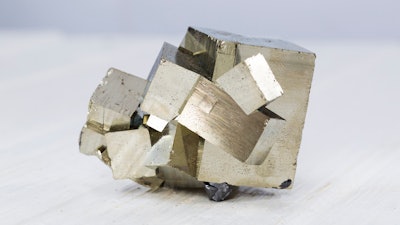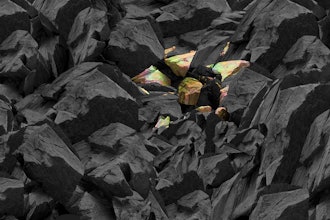
There’s a reason airlines won’t let you put your laptop in your checked luggage; the lithium-ion battery poses a serious fire hazard. But why? Lithium is incredibly reactive. For instance, pure lithium violently interacts with seemingly innocuous water, releasing heat and forming highly flammable hydrogen. This reactivity, however, is exactly why lithium makes a great material for batteries, and why it is a critical mineral for the green energy transition. Lithium-ion batteries are widely used in electric vehicles. Plus, they can store energy produced by renewable resources like solar and wind.
In recent years, lithium demand has skyrocketed. Primary sources for lithium like pegmatites and volcanic clays are well understood, but finding other stores that are safe and economical to exploit would be helpful. To that end, a team led by researchers from West Virginia University is exploring whether previous industrial operations (e.g., mine tailings or drill cuttings) could serve as a source of additional lithium without generating new waste materials. Shailee Bhattacharya, a sedimentary geochemist and doctoral student working with Professor Shikha Sharma in the IsoBioGeM Lab at West Virginia University, will present the team’s findings next week during the European Geosciences Union (EGU) General Assembly 2024.
The study focuses on 15 middle-Devonian sedimentary rock samples from the Appalachian basin in the U.S. The team found plenty of lithium in pyrite minerals in shale, Bhattacharya said, "which is unheard of.”
Though the geologic literature lacked information on the intersection between lithium and sulfur-rich pyrite, the electrochemical and engineering world has already begun to look at how lithium-sulfur batteries could replace lithium-ion ones, Bhattacharya said. “I am trying to understand how lithium and pyrite could be associated with one another.”
As it turns out, organic-rich shale may show potential for higher lithium recovery as a result of that curious interaction between lithium and pyrite. However, whether the observations can be extrapolated beyond samples from the current study site is not known. “This is a well-specific study,” Bhattacharya cautioned. But, this work is promising because it hints at the possibility that certain shales could be a lithium source that doesn’t require new mines. “We can talk about sustainable energy without using a lot of energy resources,” she said.






















